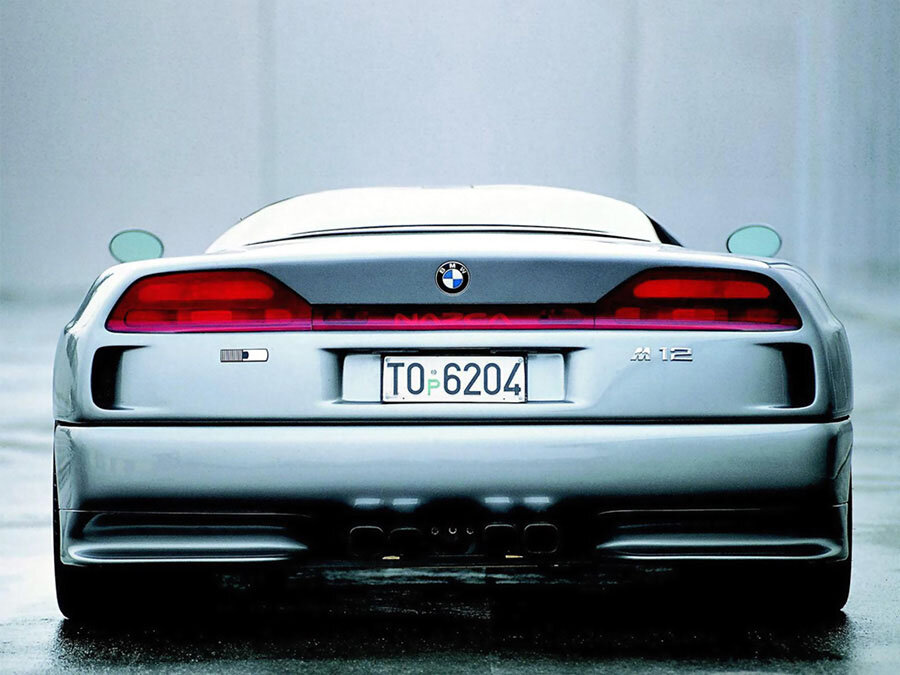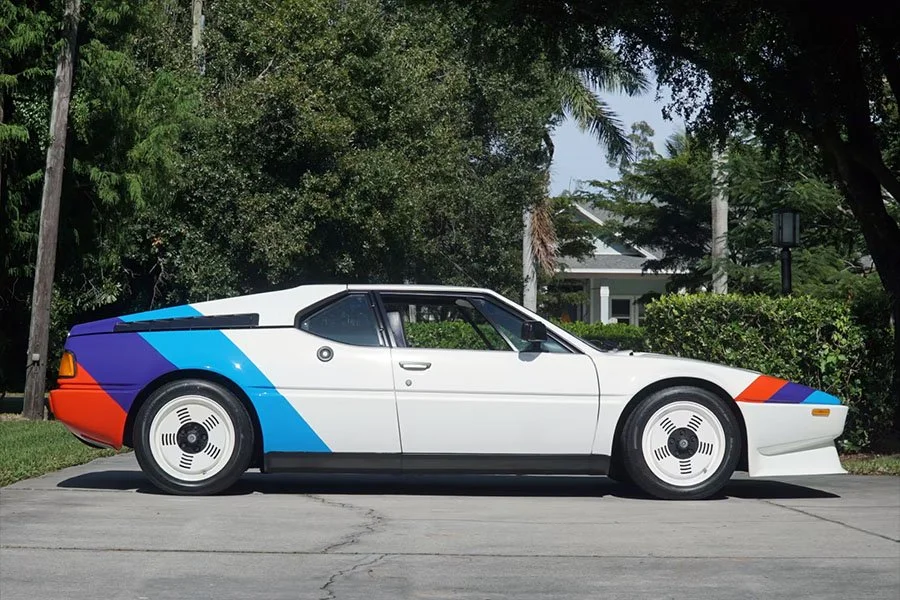Guide: BMW Nazca M12 Ital Design - a Historical & Technical Appraisal
/BACKGROUND
By the early 1980s, BMW’s bankruptcy fears of around 25 years prior had long been forgotten as the Munich firm transformed itself into an industrial powerhouse admired the world over. However, one blot on the landscape had been the company’s recent attempt at a mid-engined two-seat supercar, the E26 M1, created to rival Porsche on both road and track.
Although the one-make F1-supporting M1 Procar series had proven a brief high profile distraction during a troubled gestation, the E26 otherwise failed to satisfy BMW’s original commercial and sporting objectives. With development outsourced to a Lamborghini outfit that was teetering on the edge of bankruptcy, the new car arrived massively late and over budget which meant it was never able to compete as planned and had to sell at a far higher price than originally expected.
Accordingly, BMW quickly canned any prospect of an immediate successor and, when M1 production was discontinued in 1981, the firm reverted to its familiar product line of brilliantly engineered, greatly sought after executive Saloons, Coupes and Convertibles.
This approach continued throughout the 1980s, during which the market for high end exotics grew steadily before exploding after the stock market crash of October 1987 when speculators began to invest heavily in what quickly came to be regarded as the latest high yielding asset class.
With a full order book, and having made a bucket load of cash with the avant garde 3-series-based Z1 two-seat Roadster, BMW management gave the green light to develop an M1 successor based around the firm’s flagship V12 during the spring of 1990.
Having styled the beautiful and critically acclaimed M1, Ital Design was approached to create a fully functional prototype. The resultant Nazca M12 was unveiled at the Geneva Motor Show in March 1991.
Named in recognition of the ancient single line Nazca Desert geoglyphs in southern Peru and the twelve cylinder power unit that lurked within, the new car was derived from a stillborn Ital Design styling proposal created for the revived Bugatti organisation which had debuted at the Turin Motor Show in April 1990: the ID 90.
CHASSIS
The Nazca M12 was based around a state-of-art carbon composite monocoque with tubular subframes at either end to support the suspension, engine, gearbox and other ancillary equipment. The wheelbase measured 2600mm.
Double wishbones were used at either end with single spring / damper units at the front and two per side at the back. Body control was enhanced thanks to an anti-roll bar for both axles.
The brake system employed Bosch ABS with ventilated discs all round.
New 18-inch diameter five-spoke light alloy wheels measured 8-inches wide at the front (on 235/40 ZR18 tyres) and 10-inches wide at the rear (on 285/35 ZR18 tyres).
ENGINE / TRANSMISSION
In the engine bay was a standard five-litre Type M70 B50 60° V12 as used by the E31 850i.
The M70, which had made its debut in the new E32 7-series Saloon back in 1986, was the first twelve cylinder engine produced by a German manufacturer since the onset of World War 2. It featured an aluminium alloy block and heads with single overhead camshafts per bank, two valves per cylinder and wet-sump lubrication.
Displacement was 4988cc thanks to a bore and stroke of 84mm and 75mm respectively.
With an 8.8:1 compression ratio, Bosch Motronic M1.7 management and a three-way cat with Lambda sensor, peak output was 295bhp at 5200rpm and 332lb-ft at 4100rpm.
Transmission was through a five-speed manual Getrag 560G gearbox and single-plate clutch.
BODYWORK
The Nazca M12’s bodywork was designed by Ital Design founder Giorgetto Giugiaro’s son, Fabrizio, who was inspired by Group C and Formula 1 cars of the era.
Developed in BMW’s wind tunnel and formed entirely from carbonfibre, the Nazca M12’s body had a drag coefficient of just 0.26 and was remarkably uncluttered by the kind of aggressive aero devices found on so many contemporary supercars.
At the leading edge, BMW’s trademark kidney grilles were carved out from the nose, below which was a full width intake and wraparound chin spoiler. Z1 headlights were mounted under clear covers outboard of an arrow-like central plane that gave the fixed-in-place single-piece front clam some subtle definition.
Like the ID 90, the Nazca M12 featured a domed glass cockpit with integrated roll-over bar. Access to the cabin required the forward-hinging doors to be opened in a conventional manner and then the windows to be raised separately in Gullwing fashion. If desired, the Gullwing windows could be detached from the central T-bar for open air driving.
Down each flank, large brake cooling ducts were profiled-in along the doors above deep body coloured skirts. High-rise exterior mirrors were mounted on extended pylons towards the leading edge of each door.
A hinged single-piece rear clam opened backwards to expose the engine plus a good-sized luggage box. Poking out from the centre of the separate rear bumper were four tail pipes. Further up, Ital Design connected the handsome new tail lights with a Nazca-branded reflective strip and added a pair of elegant vertical cooling slots.
INTERIOR
The interior was fully functional with switchgear and instrumentation sourced from BMW but completely new design architecture.
Located directly behind the three-spoke steering wheel was a primary binnacle with large analogue read outs for road and engine speed and smaller dials for water temperature and fuel. Fully integrated with the main binnacle was a central control panel heavily angled towards the driver that housed the onboard computer, audio system and ventilation controls.
Well-padded seats with heavily sculpted bolsters were trimmed in leather to match the dash, transmission tunnel, door panels and sills.
Overall, the well executed glassy cabin gave the impression of a ready-for-production machine.
WEIGHT / PERFORMANCE
Thanks to its advanced construction, the Nazca M12 weighed just 1098kg.
This meant, despite having less than 300bhp, quoted performance figures were impressive with a 0-62mph time of 4.5 seconds and top speed of 180mph.
RECEPTION / FURTHER COPIES
Unfortunately, BMW were unhappy with certain aspects of the Nazca M12’s design and commissioned a revised version to appear later in the year.
The resultant Nazca C2 was displayed at the Tokyo Motor Show in October 1991.
In addition to the silver Nazca M12 show car displayed at Geneva in March 1991, two other examples were constructed for the Brunei Royal Family. Painted blue and black, these right-hand drive cars (which respectively bore chassis numbers 002/ID and 003/ID) were fitted with Alpina-tuned engines and had a radiator cooling vent carved out from the front lid. Both wore Nazca as opposed to BMW badging.
Text copyright: Supercar Nostalgia
Photo copyright: Ital Design - http://www.italdesign.it


































